Experimental approaches to assess the effect of composition of abrasives in the cause of dental microwear
- PMID: 35706657
- PMCID: PMC9174714
- DOI: 10.1098/rsos.211549
Experimental approaches to assess the effect of composition of abrasives in the cause of dental microwear
Abstract
Dental microwear is used to investigate feeding ecology. Animals ingest geological material in addition to food. The full effect of geological abrasives on tooth wear is unknown. To evaluate mineralogical abrasives as tooth wear agents, rats were fed food manufactured with quartz silt, diatomaceous earth, and calcium carbonate. Rats were assigned to treatments and fed for 15 days. Molars were scanned with a Sensofar Plu Neox confocal microscope and evaluated using ISO-25178-2 parameters and traditional microwear variables using light microscopy. Using a pellet-diet as the control, all treatments had influence on microwear and discriminant function analyses indicated that unique surface textures had been produced. ISO variables with high discriminatory values were correlated to scratch and pit frequencies, but more ISO parameters identified changes associated with numbers of scratches than changes associated with pits. The microwear changes associated with the abrasive inclusions were co-dependent on the type of diet that the abrasives had been added to. The abrasives had less effect with pellets but produced more modified and more differentiated microwear when added to the transgenic dough. Although abrasives produce distinctive surface textures, some knowledge of the properties of food with the abrasives is needed to identify the abrasive agent.
Keywords: abrasives; dental microwear; experimental animals; surface metrology.
© 2022 The Authors.
Conflict of interest statement
We declare we have no competing interests.
Figures

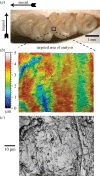
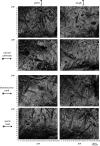
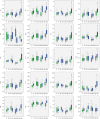


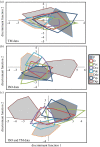
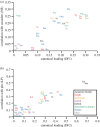

Similar articles
-
Dust and grit matter: abrasives of different size lead to opposing dental microwear textures in experimentally fed sheep (Ovis aries).J Exp Biol. 2020 Feb 12;223(Pt 3):jeb220442. doi: 10.1242/jeb.220442. J Exp Biol. 2020. PMID: 31953361
-
Shape, size, and quantity of ingested external abrasives influence dental microwear texture formation in guinea pigs.Proc Natl Acad Sci U S A. 2020 Sep 8;117(36):22264-22273. doi: 10.1073/pnas.2008149117. Epub 2020 Aug 24. Proc Natl Acad Sci U S A. 2020. PMID: 32839331 Free PMC article.
-
Grit your teeth and chew your food: Implications of food material properties and abrasives for rates of dental microwear formation in laboratory Sapajus apella (Primates).Palaeogeogr Palaeoclimatol Palaeoecol. 2021 Dec 1;583:110644. doi: 10.1016/j.palaeo.2021.110644. Epub 2021 Sep 20. Palaeogeogr Palaeoclimatol Palaeoecol. 2021. PMID: 34764513 Free PMC article.
-
Technical note: Artificial Resynthesis Technology for the experimental formation of dental microwear textures.Am J Phys Anthropol. 2021 Dec;176(4):703-712. doi: 10.1002/ajpa.24395. Epub 2021 Aug 18. Am J Phys Anthropol. 2021. PMID: 34405887
-
Tooth form and function: insights into adaptation through the analysis of dental microwear.Front Oral Biol. 2009;13:38-43. doi: 10.1159/000242388. Epub 2009 Sep 21. Front Oral Biol. 2009. PMID: 19828967 Review.
Cited by
-
Surface Replication, Fidelity and Data Loss in Traditional Dental Microwear and Dental Microwear Texture Analysis.Sci Rep. 2019 Feb 7;9(1):1595. doi: 10.1038/s41598-018-37682-5. Sci Rep. 2019. PMID: 30733473 Free PMC article.
References
-
- Lucas PW. 2004. Dental functional morphology: how teeth work. Cambridge, UK: Cambridge University Press.
-
- Teaford MF. 2007. What do we know and not know about dental microwear and diet. Evolution of the human diet: the known, the unknown and the unknowable. In Evolution of the hominin diet (ed. Unger P), pp. 106-132. Oxford, UK: Oxford University Press.
-
- Schulz-Kornas E, et al. 2020. Everything matters: molar microwear texture in goats (Capra aegagrus hircus) fed diets of different abrasiveness. Palaeogeogr. Palaeoclimatol. Palaeoecol. 552, 109783.
Associated data
LinkOut - more resources
Full Text Sources

